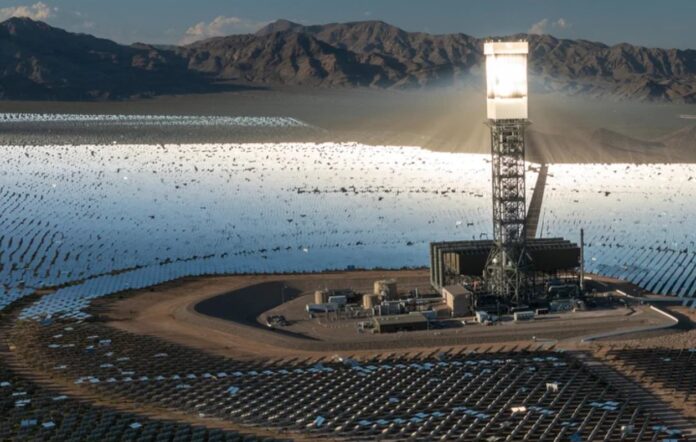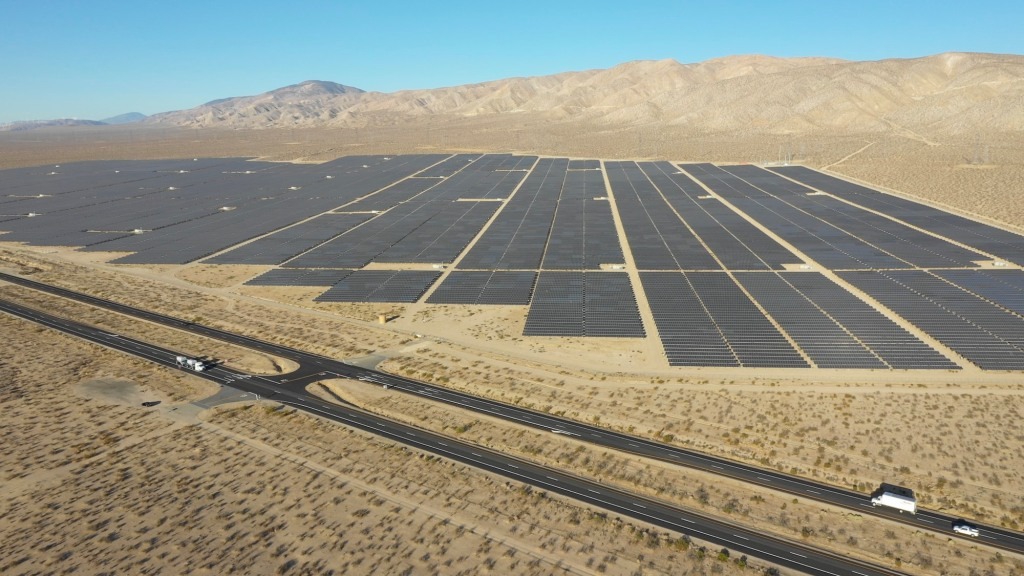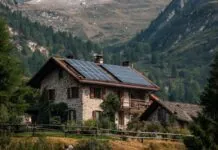
When Ivanpah opened in 2014, it was sold as nothing less than a revolution. Politicians cut ribbons, investors posed for photographs, and reporters described the desert facility as a new dawn for clean power.
Two billion dollars were poured into building a complex that covered five square miles of the Mojave Desert, lined with 2,000,000 mirrors capable of directing sunlight onto towering receivers.
It was supposed to prove that America could lead the renewable future. Instead, it now sits as one of the most expensive miscalculations in modern energy history.
The plant used concentrated solar power, a system that looked dazzling on paper. Thousands of mirrors pivoted in unison, sending beams of sunlight to the tops of three towers.
Inside those towers, water turned to steam and spun turbines that fed electricity into the grid. The visual spectacle was undeniable.
From Interstate 15, one of the longest highways in the US, drivers saw what looked like a man-made sun rising above the desert floor. The problem was that beneath the dazzling glow, the plant could not meet its promises.
Why Ivanpah Failed to Deliver
The most painful truth about Ivanpah is that it was obsolete almost as soon as it was completed. Photovoltaic panels, the simpler technology that converts sunlight directly into electricity, dropped in price at a pace nobody at Ivanpah anticipated.
By the time the facility went online, photovoltaic solar farms elsewhere were producing power more cheaply, more reliably, and with far less maintenance. Ivanpah’s technology, while impressive, was too complex to compete with panels that could be installed almost anywhere.
Utilities that once celebrated the deal began walking away. PG&E terminated its contracts with Ivanpah, arguing that customers would save money if the company purchased power elsewhere.
Southern California Edison is negotiating its exit as well. Regulators now face the likelihood that two of Ivanpah’s three units will close by 2026, more than a decade earlier than planned.
Wildlife Sacrificed for The Experiment
Environmentalists who once supported the idea of a large renewable project in the desert now call Ivanpah a disaster.
The concentrated beams created intense heat zones that killed thousands of birds each year, incinerating them midair.
Biologists documented the destruction of desert tortoise habitats and warned that rare plant species had been lost in the process.
Instead of being remembered as a triumph of green power, the facility is remembered as a project that damaged the very environment it was meant to protect.
Financial Collapse Hidden in The Glare
The $2 billion cost turned out to be an investment in spectacle rather than sustainability. Maintenance costs spiraled while energy output fell short of targets.
For drivers on the highway, the facility became less a symbol of innovation and more a hazard. The mirrors that once symbolized promise now reflect blinding light into car windshields.
Motorists have complained about the glare for years. What was supposed to light up homes now blinds travelers on their way to Las Vegas.
A Political Weapon Handed to Critics
Donald Trump, during both his presidency and his campaign rallies, frequently dismissed solar and wind as unreliable.
He described renewable projects as scams that depended on subsidies and failed when tested against reality.
Ivanpah became the perfect example for his argument. Two billion dollars, two million panels, thousands of dead birds, and an early shutdown.
The irony is that other renewable projects have succeeded, but the optics of Ivanpah’s failure overshadow those successes in political debate.
On the other side, there is an ongoing project that may end as a huge success in getting the most out of solar energy: the collaboration between SolarEdge and Solar Landscape to install rooftop solar panels on commercial warehouses.
A Closer Look at The Project’s Flaws

Ivanpah failed because it represented a philosophy that size alone equaled success. The facility was designed to be the biggest, the brightest, the most dramatic.
That ambition blinded planners to the pace of change in renewable technology. By committing to one massive concentrated solar system, investors locked themselves into a project that could not adapt.
- The system required vast amounts of water in an already dry desert.
- Maintenance on thousands of moving mirrors was constant and costly.
- The power output did not justify the price tag.
- The environmental harm undermined public trust.
Lessons Carved Into the Desert
The Mojave Desert has a way of stripping illusions bare. Ivanpah was built to dazzle, and for a short moment it did.
But the desert sun that powered it also exposed every flaw. It showed how fragile big bets on outdated technology can be.
Two billion dollars and two million panels now decay in silence, a glittering reminder that progress demands humility, adaptability, and more than spectacle.
Read Next: Best Solar Panel Kit For Your Home
















